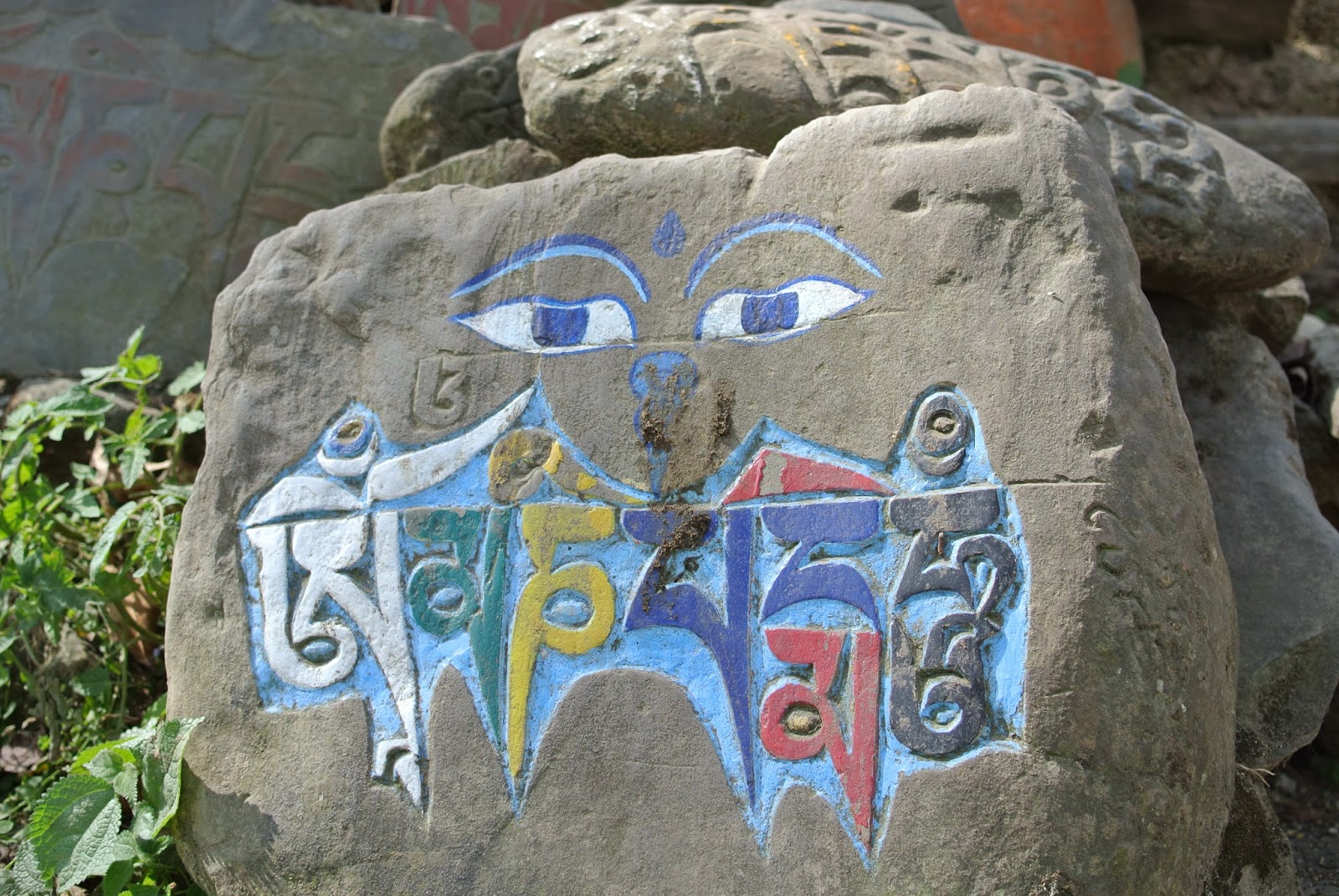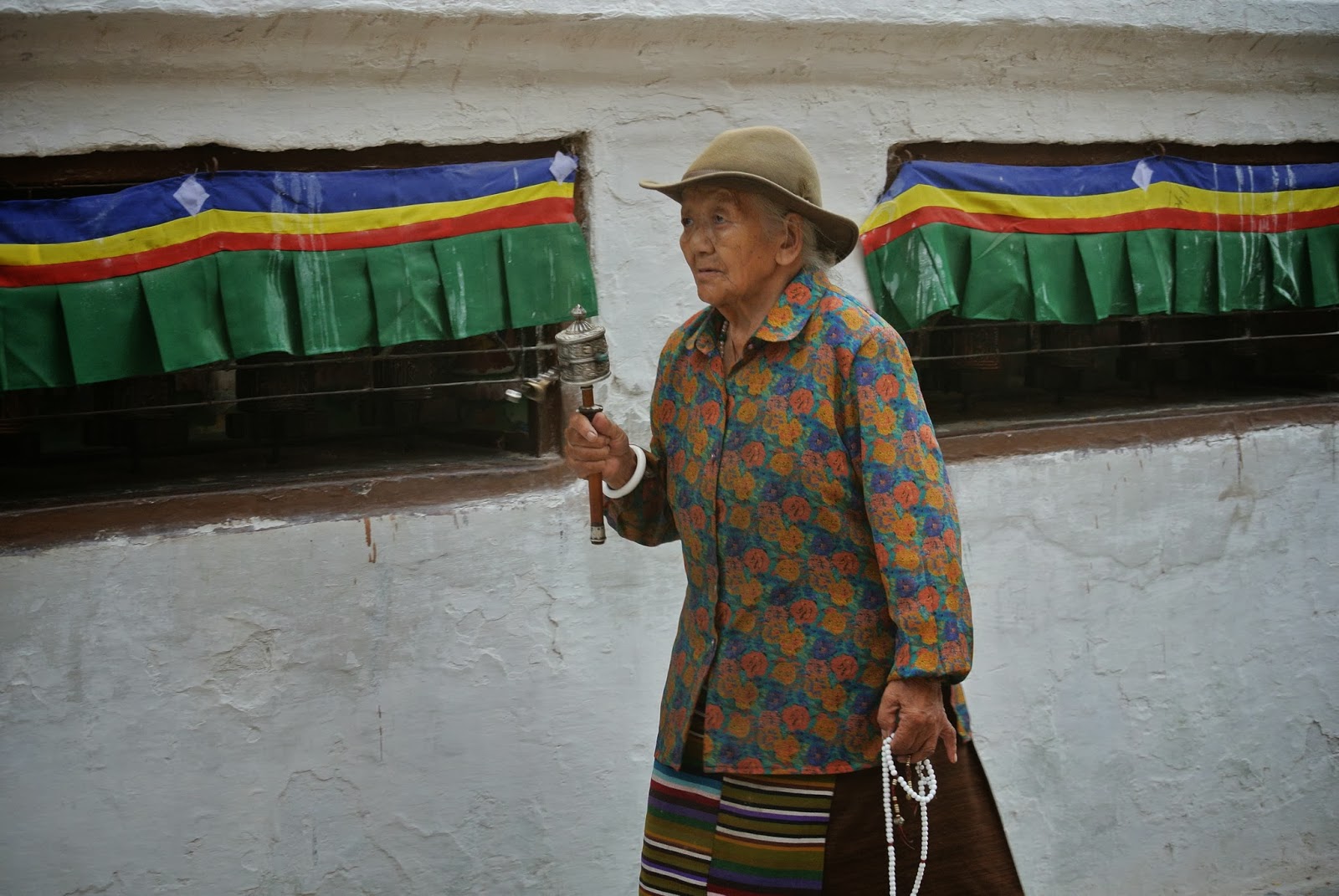On my third day in Kathmandu, I took a cab cross town to visit the Monkey Temple… Once there I climbed many steep steps to get to the top… At the top I did my Kora, walking clockwise around the base of the stupa turning the many prayer wheels as I went… Then I wandered about, amongst the many pillars, smaller stupas and through the stalls, looking for interesting camera angles… It was a trip in all aspects of the word, a proverbial feast for all the of the senses - sight, sound and smell…. But one aspect of the trip still sticks with me as I write this almost 24 hours later, that being the physical act of getting to the Temple itself...
My family and I visited the temple on our first trip to Nepal on a brisk December morning back in 1998. On that day we were staying in the Thamel district, and I don't recall the journey to the Temple being anything other than getting into the taxi, driving to the Temple, getting out and seeing the sights - straightforward and uneventful. This time the trip to the Temple seemed to assault my senses in many ways, and thus leave me with a very deep impression of the days journey.
My starting point was the eastern side of town, "closer" to the airport than the center of Kathmandu. The taxi I rode in was a tight fit and rattled and shook with every bump, pothole, or rock we encountered on our way. Oil and gas fumes swirled about the interior of the car and opening the windows brought in a fine layer of dust mixed with a heavy aroma of exhaust fumes. As we made our way across town, traveling in anything other than a straight line, it appeared that we hit every obstacle that the road put in our way. And believe me, we encountered plenty of them on the drive across town. With my limited knowledge of Kathmandu city planning it seems that all roads in the city are either in a state of permanent repair or disrepair. Piles of dirt, gravel and rock were evident everywhere on our route. The road bed itself was a jumble of rocks, potholes, elevated manholes, construction materials and debris, and massive ruts running with and against the direction of travel. As we made our way I was jostled about with every inch of forward progress. And if I wasn't jostled by travel over the road surface, I was tossed about as the driver tried to avoid the other traffic on the road. And the traffic that tried to occupy the same patch of unnavigable roadway was simply amazing! Pedestrians walking with or against traffic on what passed for sidewalks, suddenly changed course and jumped into traffic in order to cross to the other side of the street. Taxis maneuvered three abreast, horns blaring, each trying to get ahead of the other and only giving way at the last minute to oncoming or overtaking buses or heavy trucks. There was a steady stream of scooters and motorcycles threading the traffic needle at every opportunity. Then there was the occasional cow or dog placidly sleeping in the middle of the road or in the gutter, further taking up precious space in the path of traffic, resulting in everyone swerving to avoid hitting them. An occasional traffic policeman tried to keep everything organized, or at least moving. The one or two traffic lights seems mere suggestions as to how to proceed. A sign in a traffic circle said in english "Drive Fine, Avoid the Fine". Right...
For 40 + minutes my senses were jarred with unexpected movement, noise, smells, dust and rapidly moving colors in a manner which on reflection seemed more harrowing than my previous trip to the Temple. But I guess that simply means that my journey to the Monkey Temple will be etched in my bones and senses very deeply until my next return visit…
 |
At the base of the hill, by the entryway to the long climb, there are several prayer wheels and place where yak butter candles are lit... This woman is offering her prayers before ascending the stairs to the stupa…
|
 |
Lots of merchants line both sides of the walkway all up and down the stairs; this one is carving religious images onto a slate of stone…
|
 |
| The eyes of Buddha painted onto a stone slab… |
 |
They don't call it the monkey temple for nothing…
|
 |
The stairs to the top get steeper and steeper as you ascend the hill... First they are like a green ski run, then blue, and finally finish with a section of double black diamonds…
|
 |
The soaring central stupa, looks out over the Kathmandu valley in all four directions... The worker appears to be adding some "color" to the whitewashed dome…
|
 |
Even the dorje, or thunderbolt, is not exempt from the antics of the playful monkeys... The thunderbolt symbolizes male force, and the accompanying bell symbolizes female wisdom…
|
 |
Around the base of the stupa is a continuous series of prayer wheels; the inscription on each wheel is the sacred mantra "om mani padre hum", which translates as "hail to the jewel in the lotus"…
|
 |
Another view of the top of the stupa with prayer flags fluttering in the breeze, scattering mantras printed on the flags to the heavens…
|
 |
One of the many temple dogs resting at the side of a statues... Guess Buddha's best friend is a faithful pup…
|
 |
At rest in the shade of a statue…
|
 |
Carving of one of the many gods and goddesses seen on the statues in the plaza surrounding the stupa... I might be mistaken but I believe this is Tara, who is making one of the many gestures of charity…
|
 |
Buddhas watchful eyes inscribed at the top of one of the many stone pillars…
|
 |
Preparing more yak butter candles…
|
 |
Interesting bronze figure next to one of the many bronze statures at the top of the temple…
|
 |
Bronze prayer wheel…
|
 |
Bronze figurine; the face of benevolence wrapped in the hands of a serpent…
|
 |
The monkeys have moved on; another look at the large dorje at the top of the long stairs…
|
 |
Kathmandu Valley in the mid morning haze…
|
 |
At the base of the stairs is a series of mani walls with the phrase om mani padme hum, hail to the jewel in the lotus, colorfully inscribed into the stone…
|
 |
| Buddha eyes, and the sacred mantra, painted and inscribed on stone, covered with a fine layer of monkey dung... |
Pictures taken with Nikon 1 camera and 18.5 lens.








































































